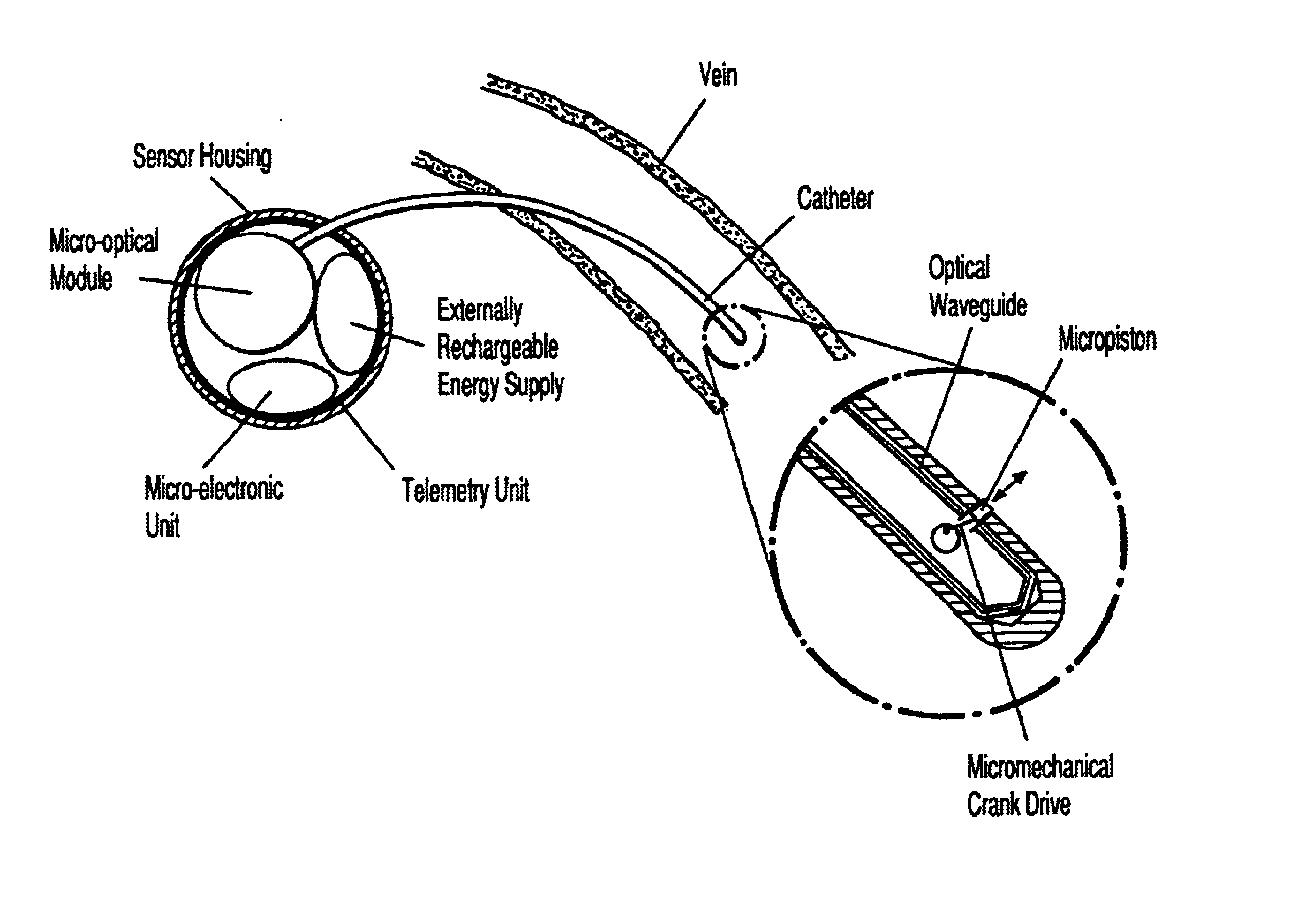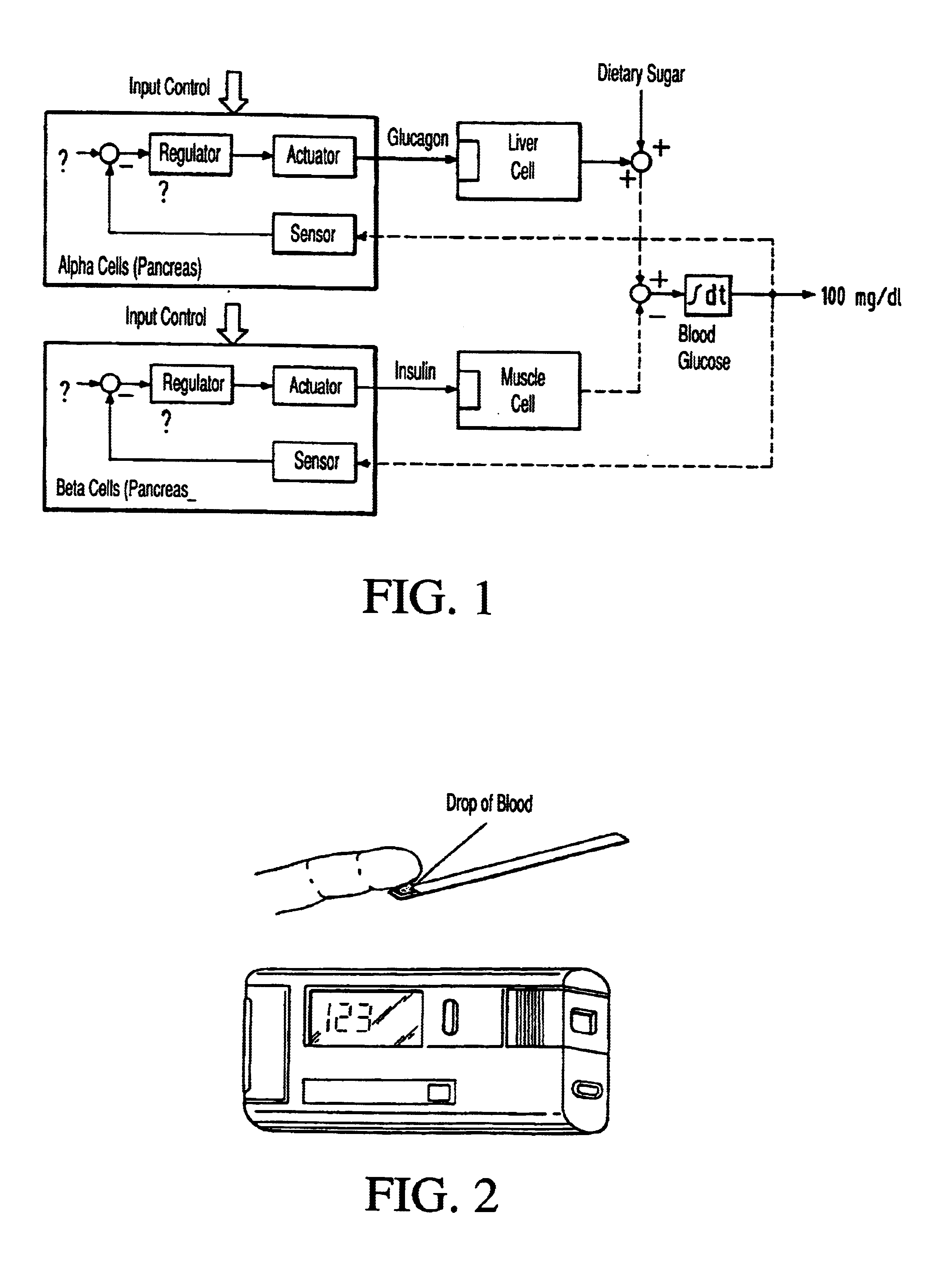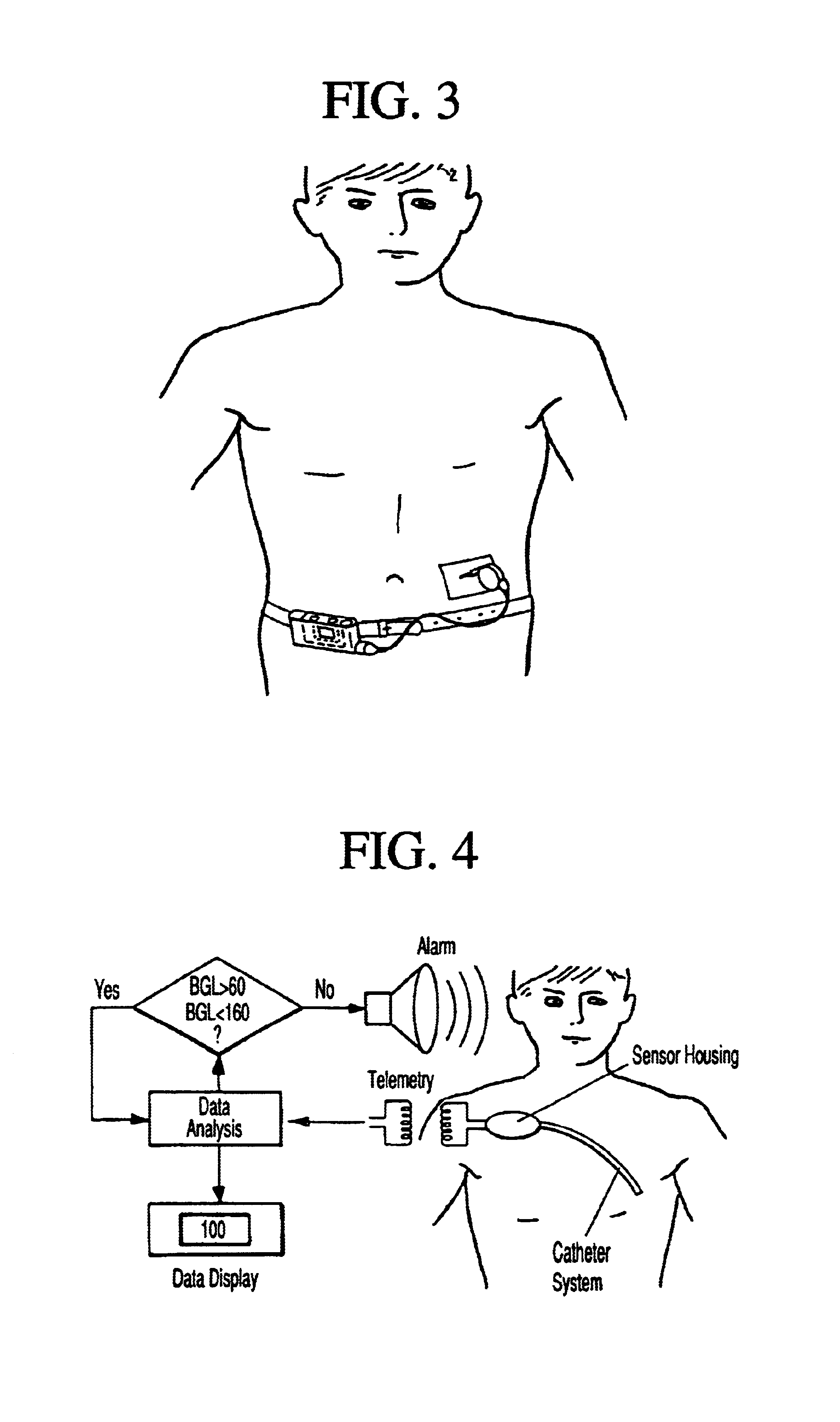Device for measuring human blood sugar levels
a technology for measuring devices and blood sugar levels, applied in the field of measuring devices for human blood sugar levels, can solve the problems of poor regulation of blood sugar levels of most diabetics, increased mean blood sugar level, and limited success of procedures
- Summary
- Abstract
- Description
- Claims
- Application Information
AI Technical Summary
Benefits of technology
Problems solved by technology
Method used
Image
Examples
Embodiment Construction
[0052]FIGS. 1, 2, and 3 are previously described above.
[0053]FIG. 4 shows the blood sugar measurement system in accordance with the invention.
[0054]The measurement system comprises of a sensor housing of biocompatible material (e.g. titanium) and a catheter system of biocompatible material (e.g. silicon) in contact with body fluids (e.g. blood). In addition, the measurement system comprises an extracorporeal transceiver unit with telemetry, data analyses, data representation and alarm functionality.
[0055]FIG. 5 shows the implant with a catheter which has an integrated optical waveguide and a micropiston at its free end.
[0056]Several functional modules are integrated into the sensor housing:[0057]transcutaneous telemetry unit for transmitting optical or electromagnetic data bidirectionally between the implanted sensor and the extracorporeal transceiver unit.[0058](externally chargeable) energy source[0059]integrated microelectronics / microcomputer to control all processes in the impla...
PUM
 Login to View More
Login to View More Abstract
Description
Claims
Application Information
 Login to View More
Login to View More - R&D
- Intellectual Property
- Life Sciences
- Materials
- Tech Scout
- Unparalleled Data Quality
- Higher Quality Content
- 60% Fewer Hallucinations
Browse by: Latest US Patents, China's latest patents, Technical Efficacy Thesaurus, Application Domain, Technology Topic, Popular Technical Reports.
© 2025 PatSnap. All rights reserved.Legal|Privacy policy|Modern Slavery Act Transparency Statement|Sitemap|About US| Contact US: help@patsnap.com



